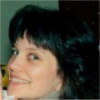 | Name: Julia
Overview: Julia was the first member of her family to go to university, and she taught in a primary school before specialising in teaching dance. Between her diagnosis in 1989 and the recording of this interview in 2004, she spent time in hospital for a variety of reasons, including the births of her three daughters. The biggest changes she noticed during these years were the increasing role of specialist nurses and also a shift to patient control: at first she was automatically put on a drip, whereas later the staff began to trust her to manage her own diabetes.
Hits=2 |
|
|  | Name: John Browning
Overview: John Browning`s father was an army officer and John always assumed that he would make his own career in the forces. He was diagnosed with diabetes at the age of 28, not long after getting married, and was invalided out of the army. He became a Conservative party agent and then a teacher. He still weighs his food and attributes his good health to his strict regime. He thinks one of the main improvements in his care has been to see the same specialist at each visit, instead of a different person every time.
Hits=1 |
|
| 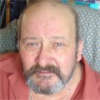 | Name: Victor Warman
Overview: Victor Warman`s father had been a Sick Birth Attendant in the Navy during the Second World War, and was very protective of his son after his diagnosis, advising him to avoid competitive sport. Victor left school at 15, spent much of his life as a machine-fitter, and ended up teaching Design Technology. His glucose levels go `up and down like a yoyo` and he now advocates plenty of exercise: `don`t do as I do, do as I say`. He has had several complications, but feels that diabetes is `not the be-all and the end-all of your life`.
Hits=1 |
|
| 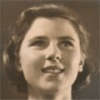 | Name: Margaret Williamson
Overview: Margaret Williamson was brought up in a village in North Yorkshire, the only daughter of an industrial chemist. Her mother was diagnosed with diabetes when Margaret was aged 2, and put on a diet of no carbohydrate with high quantities of insulin. When Margaret was diagnosed, a Newcastle consultant, James Spence, put mother and daughter on a more modern regime of high carbohydrate, which was weighed at each meal. After school, she went to business college in London, and worked as a secretary for directors of scientific institutions. She married a Cambridge research scientist and had two children.
Hits=1 |
|
|
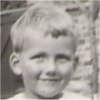 | Name: Francis Andrews
Overview: Dr. the Rev. Francis Andrews was diagnosed with diabetes on the day that war was declared in September 1939. He was the son of a doctor who`d worked as a medical officer in Flanders during the First World War. Francis also trained to be a doctor, and eventually became a consultant physician in rheumatology, having been advised not to specialise in diabetes. He married and has 6 children, 15 grandchildren and 1 great-grandchild, none of whom have diabetes. He took early retirement to train as a Catholic priest, and was ordained in 1994.
Hits=1 |
|
| 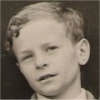 | Name: Philip
Overview: Philip was diagnosed aged 9 and considers that it`s better to get diabetes young, when the body is more adaptable. He attended a grammar school, and regrets that he often used diabetes as an excuse to miss school. He left at 16, but acquired more qualifications later and became a successful accountant. His diabetes was well controlled and caused little trouble for most of his life, until he began to get early morning hypos a few years ago. (He finds the term `hypo` unhelpful, since it`s used to refer to anything from a mild sensation to complete unconsciousness.)
Hits=1 |
|
|
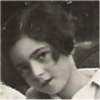 | Name: Erika Harding
Overview: Erika Harding`s father was Jewish and, in 1939, after the Nazis invaded Austria, she came by boat to England. When she looks at her photo of the thin, hollow-eyed little girl on the boat, she`s sure that she already had diabetes. After diagnosis, she was treated at King`s College Hospital, London, by R.D. Lawrence (co-founder of the British Diabetes Association, now Diabetes UK). She left grammar school at 18 and worked as a medical laboratory scientist until she retired. She and her artist husband have both played in many chamber music ensembles.
Hits=1 |
|
| 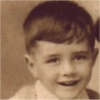 | Name: Kevin Jones
Overview: Kevin Jones` father worked in a Welsh mine, then joined the Royal Navy and worked his way up from sick berth attendant to Lieutenant Commander. Kevin went to various grammar schools in Navy ports and left at 18 to train as an accountant. He worked for several large companies, unhindered by his diabetes, but has had more problems in recent years. In 2002 his leg was amputated, but he had great help from the Limb Centre and now walks and drives with an artificial limb. He loves jazz, and is pictured with a statuette of a jazz musician.
Hits=1 |
|
|
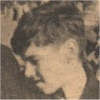 | Name: Fred
Overview: Fred`s family was poor and food was rationed in his early years: he remembers that a Mars bar was cut into slices to last 4 or 5 days! After diagnosis, he was told that `I had to control the diabetes rather than the diabetes control me` and has tried to follow that advice ever since. He lost his sight in 1978 and his second wife left him because she couldn`t cope. He began a successful business making garden furniture and now lives with his third wife, who is also blind.
Hits=1 |
|
| 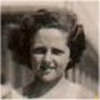 | Name: Ann
Overview: Ann came to England in 1945, and was diagnosed when the matron at her boarding school found her drinking the bath water. Her mother had worked as a nurse at Kings Hospital, London, and took her daughter there, to be treated by R.D. Lawrence (co-founder of the British Diabetes Association, now Diabetes UK). She has memories of being made to go into a hypo, of glass syringes, thick needles, and embarrassing urine tests. She worked as an occupational therapist, and brought up two children alone. Despite eyesight problems, she now makes a living as an artist.
Hits=1 |
|
|
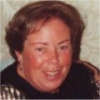 | Name: Christina
Overview: Christina`s parents came to Oxford from Eire in 1948 and she was brought up on an Irish diet of bacon, cabbage and potatoes. Her father worked in a car factory and her mother as a cook and cleaner. Christina went to a Catholic school until she was 15 and then started work folding paper at the University Press, where she met her husband. They married when she was 18 and had two sons. She worked as a cleaner in a private school for 31 years until registered blind in 2001, four years after being diagnosed with diabetes.
Hits=1 |
|
|  | Name: Kushira Hackett
Overview: Kushira Hackett`s mother was white and her father black – from Guyana. Her parents split up when she was 5 and her mother later married a Jamaican. After diagnosis, the hospital staff explained to her mother about portions and gave her scales for weighing food, but gave no explanations to Kushira. Her mother also gave no explanations, and she thinks this led to her rebellion against diabetes, and to her leaving home aged 16. She had a period of homelessness, but later gained a law degree and now lives happily in Birmingham with her partner and two children.
Hits=1 |
|
|
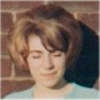 | Name: Margaret
Overview: Margaret developed pneumonia from living in a damp prefab and missed a lot of school. At 9 she attended an open-air school for sick children and was ostracised at secondary school because of her different background. She left at 15 with no qualifications, but earned more as a seamstress than her father did on the railways. She was diagnosed at 18 and married at 20. Her husband was in the RAF and she was treated in RAF hospitals. She has had serious hypos and many health problems, but enjoys making spectacular iced cakes and playing with her grandchildren.
Hits=1 |
|
| 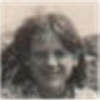 | Name: Mary
Overview: Mary`s father was a baker and her mother a factory worker. When she was diagnosed, the hospital suggested that they should buy a book on diabetes by R.D. Lawrence, but she doesn`t think they read it. She feels she was given very little information, and remembers thinking that her diabetes might disappear when she began to have periods at 15. She made little effort to control her diabetes until she went to a clinic in Oxford in 1983. She works as a podiatrist and reckons that about 75% of her patients have diabetes
Hits=1 |
|
|
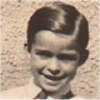 | Name: Richard Fawkes
Overview: Richard Fawkes` father worked as a railway engineer in Argentina and Richard was brought up in an expatriate British community. His father died during the war, and he returned to England in 1945 to work in the family firm. He shared a house with his mother and sister for many years, but has lived alone since 1980. He has sung in amateur musicals, renovated houses, including the one in which he now lives, and painted 1,600 paintings, most of which he has sold. He is currently recovering from a heart attack.
Hits=1 |
|
| 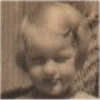 | Name: Margaret Elliott
Overview: Margaret Elliott`s newly-qualified local doctor diagnosed diabetes as soon as he walked through her front door - from the smell of acetone. Her family was poor but managed to pay for some medical care through a thrift club. Her parents did her injections for her and her husband did them after she married at 20. She was advised not to have children, but had 3 normal births and one caesarean. She attributes her good health to her husband`s care and a very strict diet. She has smoked 6 or 7 cigarettes a day since she was 14.
Hits=1 |
|
|
 | Name: Hans Csucsmi
Overview: Hans Csucsmi`s early childhood in Vienna was disrupted by war: street-fighting; the arrival of Nazi troops; the army`s occupation of his school; evacuation to Hungary; and flight from the Russians at the end of the war. After returning to Vienna, he did well at school and worked in a fashion house before emigrating to England in 1955 to train as a mental nurse. He married a fellow trainee and had one son. While working as night manager of a hospital, he ate and smoked both day and night, and became very overweight. After diagnosis, he changed his lifestyle completely.
Hits=1 |
|
| 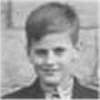 | Name: Peter
Overview: Peter`s father was a professor and both parents were well-informed about diabetes after his older brother was diagnosed in 1945. They spotted Peter`s symptoms early and at first he only needed four units of Lente insulin to last 24 hours. He was educated at Oxford and worked in the steel industry for several years. He is now a management consultant and has few problems associated with diabetes. He has recently remarried, after being widowed in 2003, and has a daughter with diabetes who is `much more able to cope with disturbances to her daily routine than I am`.
Hits=1 |
|
|
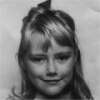 | Name: Clare
Overview: Clare was brought up in a remote Cornish hamlet. Although she developed Type 1 diabetes around the age of 5, she was not given insulin until about 4 years later and was instead kept on a near-starvation diet. She rebelled for many years and only began to take care of herself after she was registered blind in 1984. She went on to gain a second BA, MA and PhD and is now a university research fellow. She has been helped by coming to regard her lack of sight as `an issue around social equality as opposed to a medical issue`.
Hits=1 |
|
| 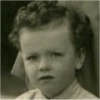 | Name: Simon Lawson
Overview: Simon Lawson`s father was 65 when he was born and his mother 44, and both died while he was in his teens. His unhappiness affected his public school education and he failed to get a place at Cambridge. Instead he worked at Sotheby`s in London and it was only after he married in 1971 that he obtained a degree and a doctorate – leading to his present work as an Oxford University librarian. He has warm memories of being treated by two eminent consultants – RD Lawrence and John Nabarro – and has always enjoyed knowing as much as possible about diabetes.
Hits=1 |
|
|
 | Name: Gillian
Overview: Gillian was diagnosed when she was 23, while working as a
journalist in London. At the age of 26, a consultant advised her that if she
wanted children, it would be a good idea to have them soon, because "you`ve
got to consider whether you`re going to see them grow up". Her partner
didn`t want to be a father at that stage, so she decided to be a single
parent and has brought up two children on her own. Her daughter was
diagnosed with diabetes in 1999.
There is also an interview with Gillian`s son, Tom.
Hits=1 |
|
|  | Name: Lisa McGregor
Overview: Lisa McGregor was diagnosed shortly before starting secondary school. She spent two weeks in hospital, where she learnt to inject herself from the outset. She was given a `traffic light` book, listing forbidden and permitted foods, but didn`t follow the diet strictly. She injected herself twice daily for 20 years until moving to a more flexible regime, with four injections, in 2003. She describes it as a DAFNE regime (Dose Adjustment for Normal Eating), but hasn`t attended a DAFNE training course. She has had few health problems, but several frightening experiences as a result of hypos.
Hits=1 |
|
|
| Search returned 23 matches |